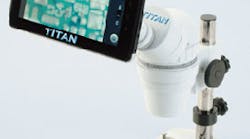ASTM International has introduced a new standard that provides insight on what conditions promote fretting fatigue and offers approaches to design experiments to assess the issue.
Fatigue fretting is the process of crack formation and progressive crack growth at a location in a mechanical system where two components are in contact and undergoing a vibratory loading. According to Dr. Richard Neu, professor of mechanical engineering at Georgia Tech and a member of ASTM International's E08.05 subcommittee, examples would include the dovetail connection between a blade and disc of a gas turbine, where the various components are riveting and bolted joints, or components that are press-fit or clamped in some way to another component.
The ASTM E2790 Guide for Fretting Fatigue testing "serves as a starting point for someone who desires to evaluate the fretting fatigue response of two materials in contact," according to Neu. The guide is also useful to researchers interested in developing a program dealing with fretting fatigue and fretting wear, or anyone developing more specific test methods.
The next Subcommittee E08 meeting is scheduled for May 16-20 in Anaheim, CA. For more information about the meeting visit the ASTM International website.
Latest from Uncategorized
Latest from Uncategorized
Uncategorized
Newsletter Confirmation Page
May 27, 2013
Uncategorized
Vented Safety Helmet
July 21, 2012
Melt/Pour
A Plan Comes Together
July 5, 2012
Uncategorized
Convert Microscope to Videoscope
July 2, 2012
Uncategorized
Robot Programming with Tablet-PC
July 2, 2012



